20 Tasty Spanish Saltwater Fish Dishes You Must Try
Spanish saltwater fish dishes represent a vibrant culinary tradition deeply rooted in coastal heritage and oceanic bounty.
Passionate chefs transform fresh marine catches into delectable masterpieces that reflect regional flavors and generations of seafaring expertise.
Mediterranean and Atlantic waters provide an incredible diversity of swimming treasures for remarkable cuisine.
Sophisticated palates appreciate the delicate textures and nuanced seasonings that characterize these carefully prepared seafood creations.
Skilled fishermen and talented cooks collaborate to elevate simple ingredients into extraordinary gastronomic experiences.
Cultural techniques passed through families ensure authentic preparation methods remain intact and celebrated.
The ocean's remarkable ingredients shine through meticulous cooking approaches that honor maritime traditions.
Here are 20 essential Spanish saltwater fish dishes that will transport you to sun-drenched coastal kitchens:
Essential Spanish Saltwater Fish Dishes to Savor
The Spanish coastline is famed for its abundance of saltwater fish, and local kitchens know how to make the most of every catch. Expect bold flavors, a touch of garlic, and the unmistakable taste of the sea in each dish.
Kokotxas
Kokotxas are prized Basque delicacies crafted from gelatinous fish head cheeks of hake or cod, celebrated for their tender, melt-in-your-mouth texture.
Fishermen traditionally prepare these succulent morsels by gently frying them in clay casserole pots with classic sauces like salsa verde, which blends olive oil, flour, fish stock, garlic, and parsley.
Authentic preparation involves carefully selecting the lower chin area of premium fish, ensuring maximum flavor and delicate consistency.
White wine variations offer another sophisticated preparation method, creating rich, aromatic sauces that complement the fish's natural richness.
Garlic and olive oil enhance the kokotxas' subtle marine flavors, making them a staple in Basque coastal cuisine.
Small pieces are typically lightly fried to preserve their gelatinous quality and soft texture.
Crusty bread serves as the perfect accompaniment for soaking up the flavorful sauce.
Espetos
Espetos are traditional Spanish skewered sardines originating in Málaga's coastal regions as a resourceful fishing community's method for cooking surplus catch.
Fishermen pioneered this grilling technique in the late 19th century, transforming simple sardines into a beloved regional specialty by skewering 6 fish and cooking them over open olive wood flames.
Sea salt and careful grilling create a golden exterior that seals in the fish's rich maritime flavors.
Summer months from May to August offer the most flavorful sardines due to higher fat content.
Olive wood fires impart a unique smoky essence to the fish.
Restaurants and beach bars across southern Spain serve espetos with refreshing beverages like sangria, beer, or Tinto de verano.
The cooking method highlights the sardines' natural taste through minimal seasoning.
Each skewer represents a simple yet profound connection to maritime culinary traditions.
Croquetas De Bacalao
Croquetas de bacalao are crispy Spanish fritters featuring salt cod as their star ingredient.
Spanish kitchens transform flaky cod into a smooth mixture blended with creamy bechamel or mashed potatoes.
Breadcrumb-coated and deep-fried, these golden bites deliver a satisfying crunch with each bite.
Salt cod provides a rich, briny flavor that distinguishes this version from other croqueta varieties.
Traditional tapas bars across Spain serve these small, addictive snacks as a popular appetizer.
Home cooks and restaurants alike prepare the fritters by carefully mixing shredded cod with a creamy base.
Seasoning and careful frying ensure maximum flavor and texture.
Each croqueta represents a perfect balance of crisp exterior and silky interior.
Grilled Sardines (Sardinas A La Parrilla)
Grilled sardines embody Mediterranean coastal cuisine's simplest and most flavorful seafood preparation.
Mediterranean fishermen traditionally grill these small, silvery fish directly over hot charcoal to enhance their natural taste.
Olive oil, lemon juice, salt, and black pepper create a classic marinade that transforms sardines into a delicious summer dish.
Summer months bring peak freshness when sardines are most abundant along coastal regions.
Light, crisp white wines complement the sardines' rich, smoky flavor perfectly.
Portugal and Greece particularly celebrate this dish as a staple of their seaside culinary traditions.
Bacalao Al Pil-Pil
Bacalao al pil-pil are savory Basque salt cod fillets transformed into a silky sauce through meticulous olive oil cooking.
Spanish fishermen perfected this technique centuries ago along northern coastal regions.
Mediterranean kitchens celebrate this dish as a testament to ingredient simplicity and culinary skill.
Olive oil becomes the magical medium where cod releases natural gelatin, creating a creamy emulsion.
Garlic and chili peppers add depth and subtle heat to the delicate fish preparation.
Skilled cooks manipulate the pan carefully to achieve perfect sauce consistency during 15-30 minute cooking.
Garnishing with reserved garlic and pepper bits enhances visual appeal and flavor complexity.
Served hot or warm, this dish represents traditional Spanish seafood mastery.
Marmitako
Marmitako are hearty Spanish tuna stews originating from Basque fishing traditions, featuring fresh caught fish slow-cooked with robust vegetables in traditional clay pots.
Fishermen crafted this one-pot meal during long ocean voyages, transforming simple ingredients into nourishing meals aboard boats near Spanish coastal waters.
Tuna remains the most authentic protein, though modern variations now include different fish types depending on regional availability.
Potatoes form the stew's thick base, creating a rich and satisfying texture that anchors the dish's rustic character.
Tomatoes, onions, and occasional chili peppers add depth and complexity to the recipe's flavor profile.
Regional cooks frequently personalize marmitako through subtle ingredient adjustments, reflecting local seafood preferences.
Spanish maritime culture deeply influences this dish's preparation and significance.
Generations of fishermen have sustained themselves with this hearty, resourceful meal that transforms humble ingredients into a memorable culinary experience.
Bacalao A La Vizcaina
Bacalao a la Vizcaina reveals Spain's maritime culinary heritage through its rich, complex salt cod preparation simmered in a deeply flavored sauce.
Spanish fishermen traditionally transformed preserved cod into this signature Basque dish featuring tender fish bathed in a robust sauce of red onions and garlic.
Choricero pepper puree adds signature warmth and depth to the sauce, creating a harmonious blend of maritime and land-based ingredients.
Home cooks carefully desalt and prepare salt cod before slowly cooking it to tender perfection.
Mediterranean ingredients merge in this rustic seafood specialty that connects generations of coastal communities.
Restaurants and families across Spain continue preparing this historic recipe with reverence for traditional techniques.
Warm serving temperatures enhance the dish's comforting and satisfying qualities.
Fried Cod In Tomato Sauce (Bacalao Frito Con Tomate)
Bacalao frito con tomate represents a vibrant Spanish seafood specialty featuring salt cod transformed into a crispy, flavorful meal.
Spanish kitchens prepare this traditional dish by soaking dried cod overnight and coating it with flour for perfect golden frying.
Olive oil becomes the key cooking medium for creating a rich, delicious base that brings out the fish's delicate texture.
Chopped onions and garlic sizzle in the same pan, releasing aromatic flavors that complement the cod's saltiness.
Ripe tomatoes and roasted bell peppers join the mix, adding depth and color to the dish.
Bay leaves contribute a subtle herbal note that enhances the overall taste profile.
Mediterranean ingredients blend seamlessly, creating a simple yet sophisticated meal that reflects Spain's coastal culinary traditions.
Rodaballo A La Gallega
Rodaballo a la gallega dominates Spanish seafood cuisine as a prized Galician turbot preparation featuring fresh fish poached with regional vegetables in a complex white wine broth.
Galician fishermen traditionally prepare this elegant seafood dish using locally caught turbot from Atlantic waters near northwestern Spain.
Fishermen carefully select premium turbot and pair it with simple yet flavorful ingredients like white wine, onions, carrots, leeks, potatoes, and herbs.
Fresh turbot is gently boiled until perfectly tender and then sliced lengthwise to showcase its delicate meat.
Mediterranean-style seasonings including garlic, olive oil, bay leaves, pimenton, and lemon juice create a robust sauce that complements the fish's natural flavors.
Kitchen experts carefully arrange boiled vegetables alongside the turbot for a balanced presentation.
Boquerones Fritos
Boquerones fritos are crispy, golden-brown anchovies deep-fried to perfection in Andalusia's coastal regions.
Spanish restaurants and beach bars serve these salty, crunchy fish as a popular tapas dish with roots in Mediterranean cuisine.
Fresh anchovies get a simple coating of flour and sea salt before sizzling in hot olive oil.
Skilled cooks transform the small fish into a crisp, irresistible snack that pairs perfectly with cold beer or white wine.
Each anchovy turns golden brown and develops a satisfying crunch during quick frying.
Salt and flour create a light, airy exterior that highlights the fish's natural flavor.
Restaurants typically serve boquerones fritos immediately after cooking to maintain maximum crispness.
Seafood lovers consider this dish a quintessential Spanish appetizer that represents coastal culinary traditions.
Anchovies In Vinaigrette (Bocartes En Cazuela)
Bocartes en cazuela showcases fresh anchovies transformed into a mouthwatering Basque Country seafood specialty.
Spanish fishermen traditionally prepare this dish by rinsing and cleaning anchovies before seasoning them with salt and red pepper flakes.
Olive oil and minced garlic create a sizzling base for frying the delicate fish.
Red wine vinegar adds a tangy finish to the crispy, golden-brown anchovies.
Mediterranean flavors shine through the simple yet powerful ingredients.
Home cooks and restaurant chefs alike celebrate this rustic seafood preparation.
Minimal ingredients highlight the anchovies' natural taste and texture.
Regional techniques ensure maximum flavor in every bite.
Albondigas De Bacalao
Albondigas de bacalao signify Spanish seafood artistry through tender cod meatballs bursting with Mediterranean flavors.
Aragonese cuisine celebrates these savory spheres crafted from boiled potatoes and flaky cod mixed with garlic, eggs, and fresh parsley.
Salt cod provides rich protein and distinctive taste to these traditional Spanish bites.
Regional cooks carefully blend mashed potatoes with fish to create smooth, uniform meatball textures.
Flour helps bind ingredients while tomatoes add subtle acidity and depth.
Spanish kitchens often serve these meatballs as tapas or appetizers during social gatherings.
Mediterranean cooking techniques transform simple ingredients into complex flavor profiles.
Home cooks treasure this recipe as a classic representation of Spanish culinary heritage.
Ajoarriero
Ajoarriero sparks hearty flavor profiles with salt cod simmered in a robust Basque and Navarre regional recipe.
Mediterranean fishermen crafted this rustic dish as a powerful protein-rich meal during long sea journeys.
Salt cod serves as the primary ingredient, carefully shredded and blended with chopped tomatoes, onions, red and green peppers, and garlic.
Potatoes add substance and texture to the traditional preparation.
Ancient cooking methods involved clay pot preparation over open fires, creating a communal meal experience.
Garlic quantities varied based on the number of diners sharing the meal.
Spanish home cooks continue preparing this classic dish as a connection to maritime culinary heritage.
Merluza A La Gallega
Merluza a la gallega showcases Galician cuisine's seafood mastery through a simple yet flavorful hake preparation featuring tender fish poached with potatoes in a savory broth.
Spanish fishermen originally developed this hearty regional specialty in northwestern coastal regions where fresh hake was abundant.
Regional cooks carefully boil hake pieces with potatoes, onions, and bay leaves in salted water to create a moist, delicate protein-rich meal.
Paprika and olive oil add depth and warmth to the dish's overall flavor profile.
Mediterranean cooking techniques highlight the fish's natural freshness and soft texture.
Home kitchens and seaside restaurants across Galicia serve this traditional recipe as a comforting main course.
Garlic contributes an aromatic undertone that complements the hake's mild flavor.
Mojama
Mojama represents Spain's exceptional salt-cured tuna delicacy crafted through an ancient Mediterranean preservation technique transforming fresh fish into a concentrated, intensely flavored protein.
Fishermen along Andalusia's coastal regions first developed this method to prevent tuna spoilage by carefully salting and air-drying fresh fillets over several weeks.
Traditional preparation involves rubbing high-quality tuna with sea salt before hanging in well-ventilated spaces where ocean winds naturally dehydrate the meat.
Spanish tapas bars frequently serve thin, translucent mojama slices drizzled with extra virgin olive oil as an elegant appetizer.
Professional butchers carefully slice mojama into paper-thin pieces that highlight its rich, concentrated flavor profile resembling premium prosciutto.
Experienced producers consider mojama an art form requiring precise temperature, humidity, and wind exposure to achieve perfect texture and taste.
Bacalla A La Llauna
Bacalà a la llauna represents Barcelona's maritime culinary heritage, featuring salt cod transformed into a crispy golden delicacy through strategic frying techniques.
Mediterranean fishermen perfected this 19th-century Spanish dish by carefully desalting cod fillets and coating them in seasoned flour for optimal texture.
Olive oil plays a crucial role in creating the fish's signature golden-brown crust, which remains delicate and intact during cooking.
Garlic and paprika provide robust flavor profiles that complement the cod's natural saltiness.
Traditional preparation involves frying the fish in a rectangular llauna pan, ensuring even heat distribution and maintaining the fillets' structural integrity.
Spanish home cooks traditionally serve this dish as a hearty main course during family gatherings.
Atun Mechado
Atun mechado is a classic Spanish tuna dish from Malaga featuring tuna studded with bacon and garlic, carefully prepared through a unique stuffing technique.
Peppercorn-crusted bacon strips are carefully inserted into strategic slits along the fish's surface, creating intense flavor pockets.
Chefs first coat the tuna in flour and brown it in olive oil, developing a rich golden exterior.
Simultaneously, onions and carrots are gently sautéed to create a robust base for the sauce.
Sherry or white wine adds depth and complexity to the cooking liquid, which also includes aromatic bay leaves and cloves.
Parsley provides a fresh finishing touch to the dish.
After browning, the tuna is transferred to a casserole and simmered until perfectly tender.
Generations of Spanish home cooks have perfected this traditional method, transforming simple ingredients into a deeply satisfying meal.
Pescado Seco
Pescado seco represents an ancient Canary Islands fish preservation technique crafted by generations of coastal inhabitants to transform fresh seafood into a concentrated protein source.
Local fishermen select specific fish like parrotfish and wreckfish, carefully cleaning and cutting them before generously salting the pieces.
Sunlight and ocean winds naturally dry the fish over four days, creating a unique preservation method that intensifies flavor and firms the flesh.
Traditional techniques ensure minimal waste while extending fish storage capabilities in pre-refrigeration times.
Salt crystals draw moisture from the fish, preventing bacterial growth and concentrating nutritional value.
Texture becomes dense and chewy, with a rich, complex taste profile that reflects maritime heritage.
Preserved fish served as critical protein during challenging periods when food supplies were limited.
Pescado seco continues to be a respected culinary tradition connecting modern islanders with their ancestral survival strategies.
Salt Cod With Potatoes And Onions (Boyitori)
Boyitori showcases Valencia's coastal culinary heritage as a rustic salt cod specialty that transforms simple ingredients into a flavorful Mediterranean comfort meal.
Fishermen and home cooks traditionally prepare this dish using fresh salt cod, potatoes, and onions as primary components.
Olive oil provides richness while parsley adds a fresh herbal note to the preparation.
Salt cod gets sautéed with potato pieces and onion quarters over high heat, creating a golden-brown exterior and tender interior.
Spanish coastal communities have long embraced this economical and satisfying recipe.
Mediterranean cooking techniques highlight the ingredient's natural flavors and textures.
Valencia's fishing traditions deeply influence this straightforward yet delicious dish.
Caldillo De Perro
Caldillo de perro, a savory Andalusian soup from El Puerto de Santa Maria, showcases a unique culinary tradition despite its misleading name.
Spanish fishermen crafted this hearty dish using fresh hake, olive oil, onions, Seville oranges, garlic, and stale bread as a resourceful meal.
Fishermen would fry garlic in oil before discarding it, then use the same fragrant oil to sauté onions until soft.
Water gets added to create a rich base, with hake pieces gently boiled into the broth.
Seville orange juice provides a bright, tangy accent near the end of cooking.
Crusty bread fragments are stirred in to add texture and absorb the flavorful liquid.
Traditional serving happens in rustic earthenware plates called cazuela de baro, maintaining the soup's authentic maritime spirit.
How Is Spanish Fish Cuisine Mostly Cooked – Grilled, Stewed, or Fried?
Spanish fish cuisine showcases a variety of cooking methods, each highlighting the fresh flavors of saltwater fish:
Besides grilling, stewing, and frying, Spanish fish cuisine also features these cooking methods:
What Drinks Pair Best With Spanish Saltwater Fish Dishes?
Pairing drinks with Spanish saltwater fish enhances the dining experience:
Choosing the right drink elevates Spanish fish dishes, balancing flavors and textures beautifully.

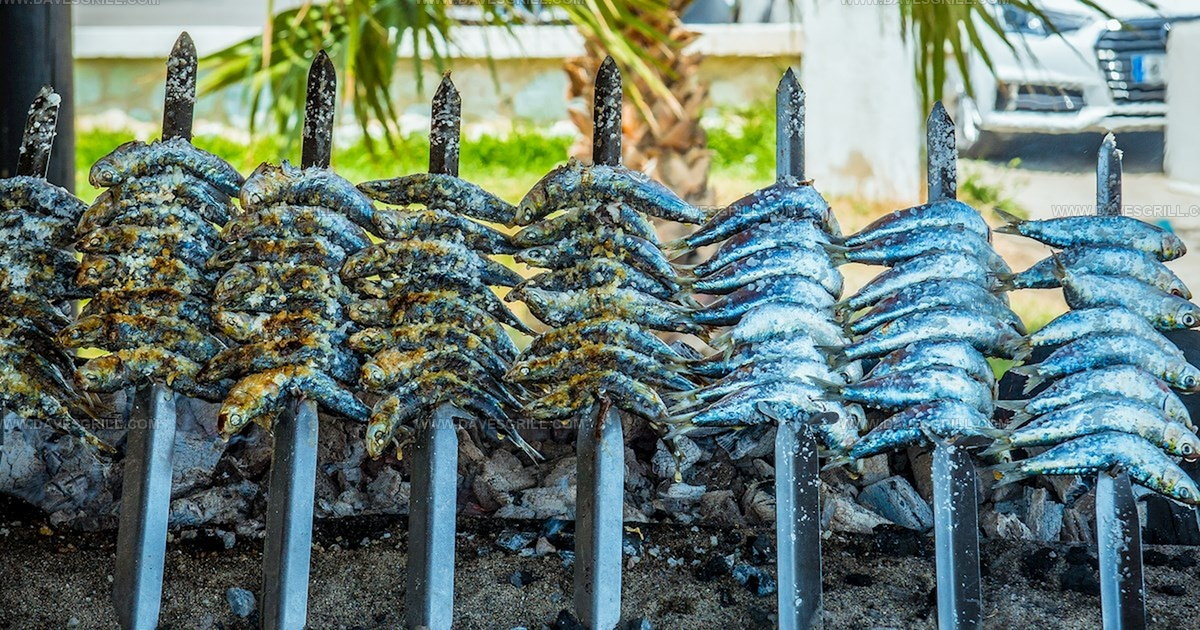
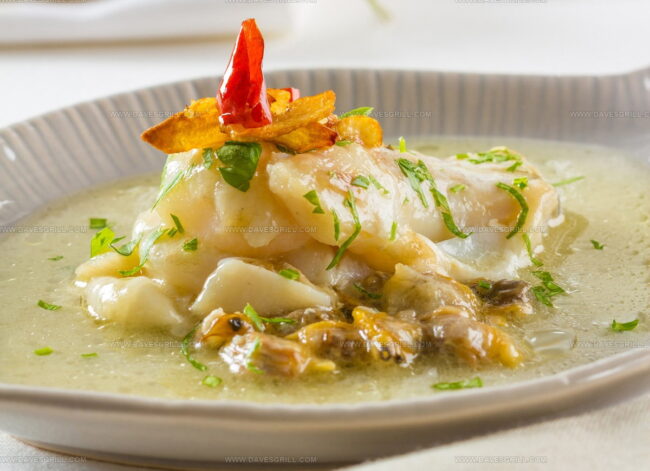
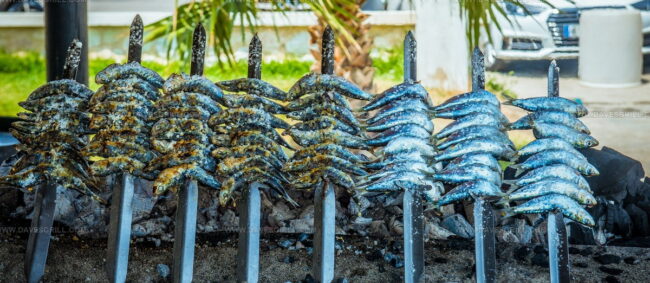
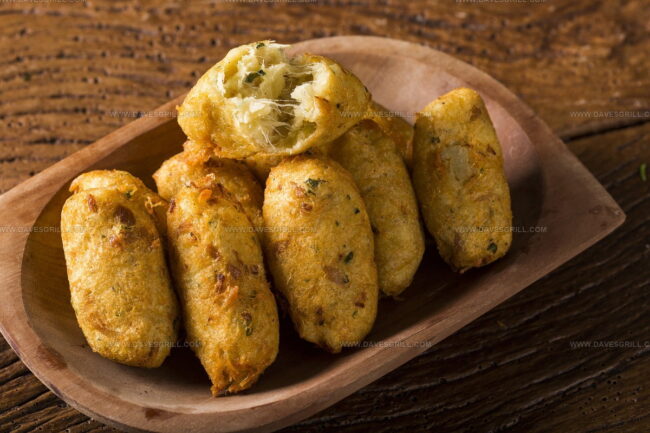
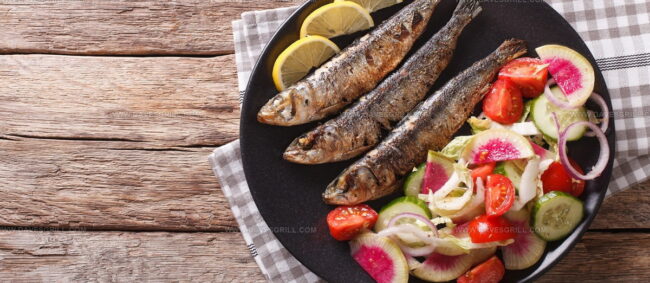
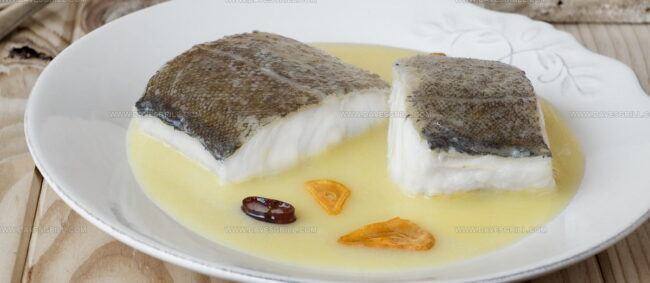
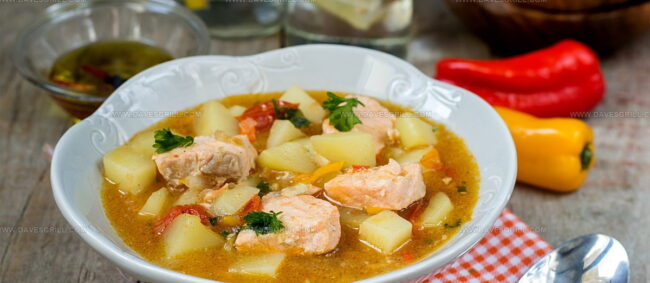
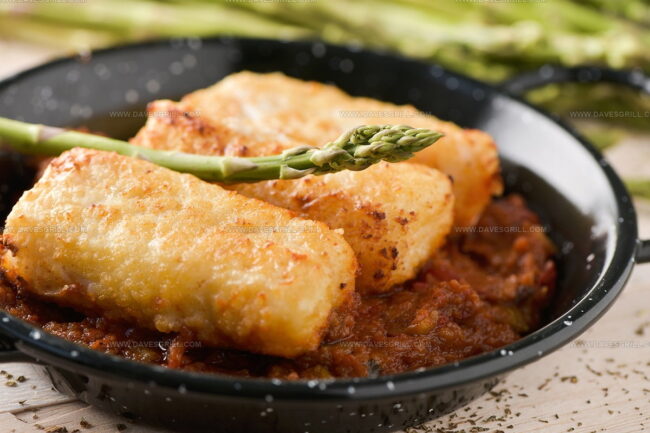
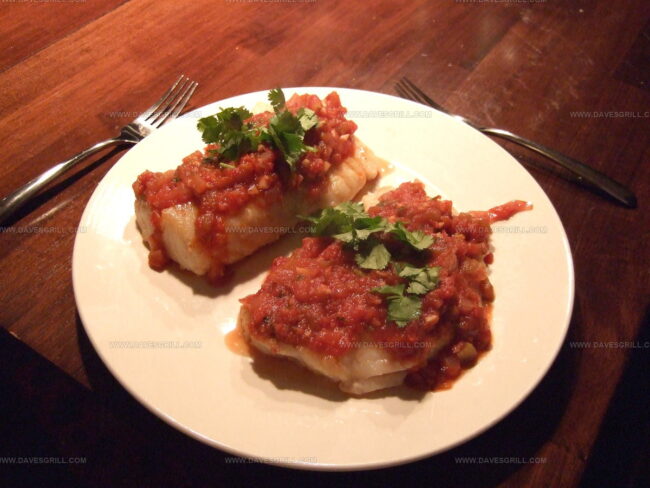
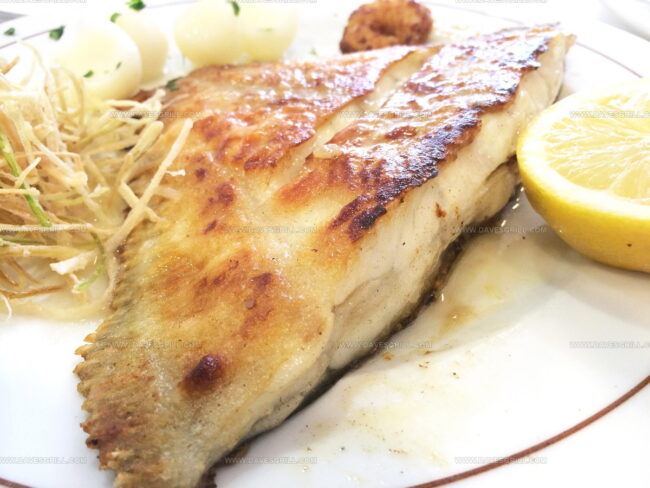
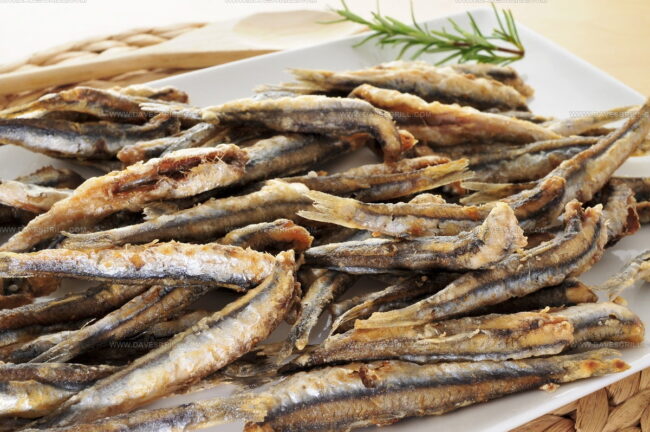
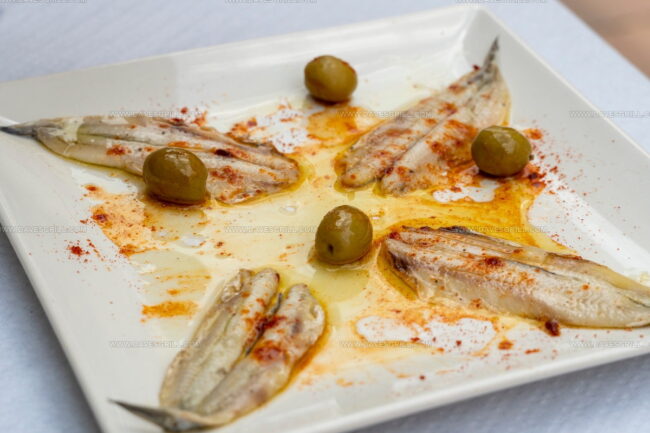
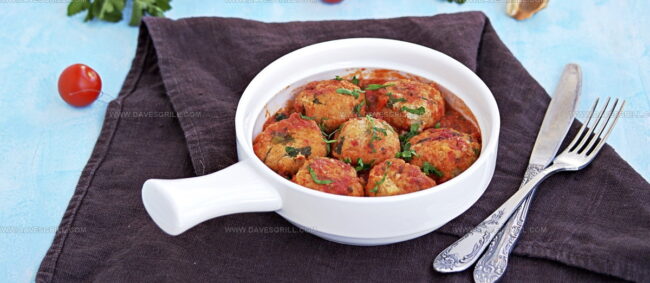
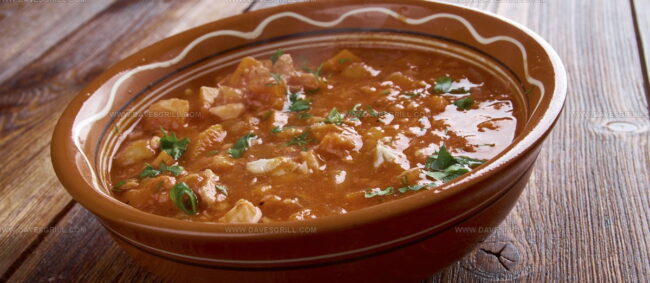
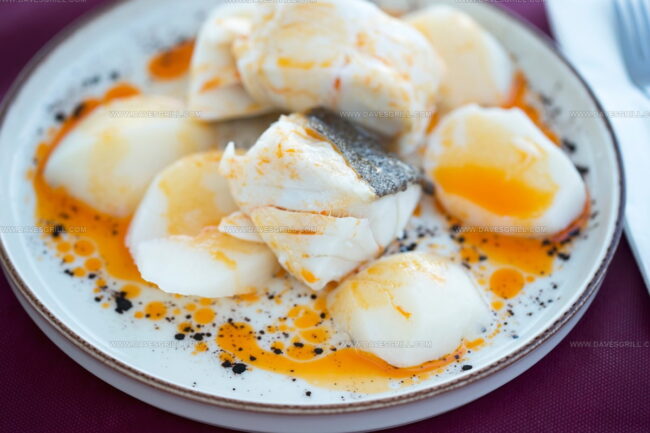
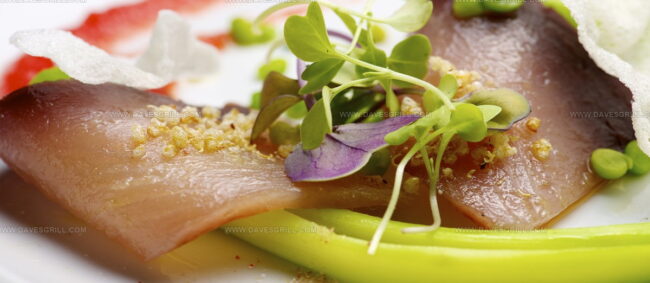
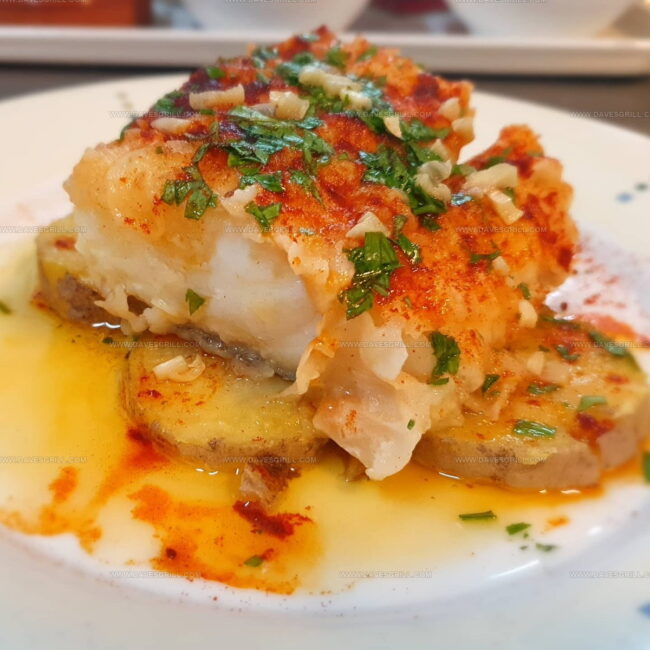
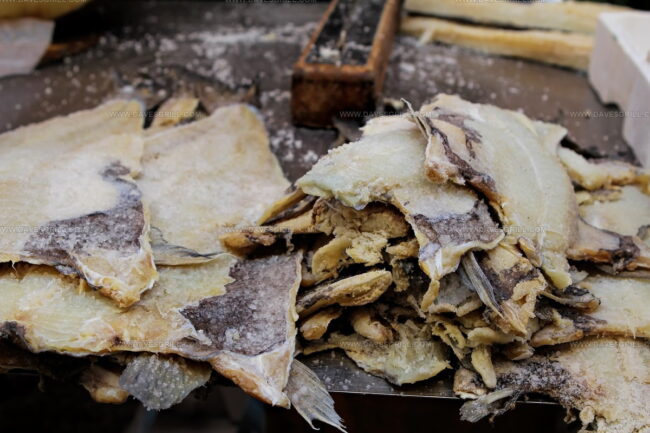
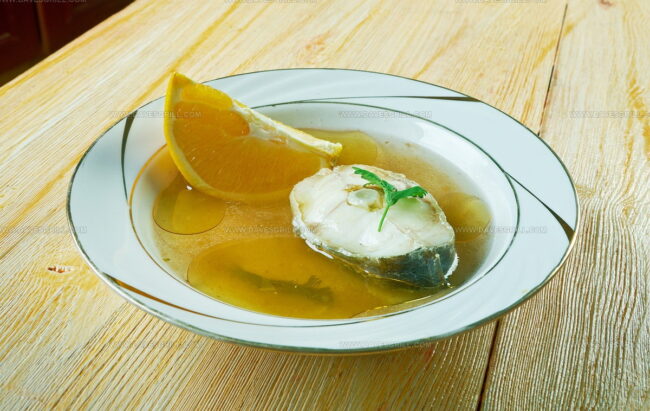
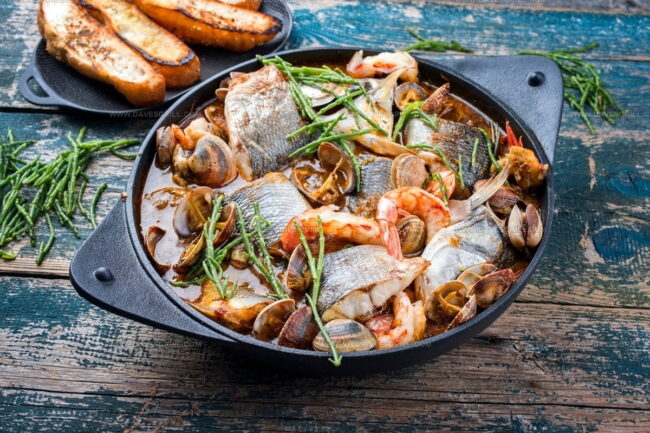
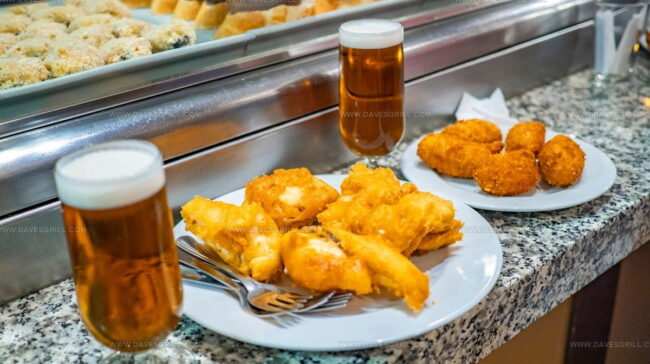
Dave Mitchell
Founder & Chief Recipe Developer
Expertise
Education
Asheville-Buncombe Technical Community College
Associate of Applied Science in Culinary Arts
Focus: Comprehensive training in culinary techniques, kitchen management, and menu planning, with a special emphasis on grilling and outdoor cooking.
Dave Mitchell is the heart behind Daves Grill, a cook, writer, and lover of all things grilled. He studied Culinary Arts at Asheville-Buncombe Technical Community College and spent years cooking, testing, and sharing recipes that actually work.
Dave started Daves Grill to keep things simple: one great recipe at a time. His food is bold, easy to follow, and made for real people with regular kitchens. From juicy steaks to quick sides, Dave’s recipes bring the heat without the hassle.